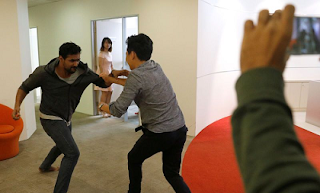According to the report of Jeremy Wagstaff, companies from Singapore to Finland are racing to improve artificial intelligence so software can automatically spot and block videos of grisly murders and mayhem before they go viral on social media.
So far, nobody can claim to have cracked the problem completely.
A Thai man who broadcast himself killing his 11-month-old daughter in a live video on Facebook a few days ago, was the latest in a string of violent crimes shown live on the social media company. The incidents have prompted questions about how Facebook's reporting system works and how violent content can be flagged faster.
A dozen or more companies are wrestling with the problem, those in the industry say. Google - which faces similar problems with its YouTube service - and Facebook are working on their own solutions.
Most are focusing on deep learning: a type of artificial intelligence that makes use of computerized neural networks. It is an approach that David Lissmyr, founder of Paris-based image and video analysis company Sightengine, says goes back to efforts in the 1950s to mimic the way neurons work and interact in the brain.
Teaching computers to learn with deep layers of artificial neurons has really only taken off in the past few years, said Matt Zeiler, founder and CEO of New York-based Clarifai, another video analysis company.
It's only been relatively recently that there has been enough computing power and data available for teaching these systems, enabling "exponential leaps in the accuracy and efficacy of machine learning", Zeiler said.
Some of the companies said industry adoption was slower than it could be, in part because of the added expense. That, they say, will change. Companies that manage user-generated content could increasingly come under regulatory pressure, says Valossa's Rautiainen.
"Even without tightening regulation, not being able to deliver proper curation will increasingly lead to negative effects in online brand identity," Rautiainen says.
So far, nobody can claim to have cracked the problem completely.
A Thai man who broadcast himself killing his 11-month-old daughter in a live video on Facebook a few days ago, was the latest in a string of violent crimes shown live on the social media company. The incidents have prompted questions about how Facebook's reporting system works and how violent content can be flagged faster.
A dozen or more companies are wrestling with the problem, those in the industry say. Google - which faces similar problems with its YouTube service - and Facebook are working on their own solutions.
Most are focusing on deep learning: a type of artificial intelligence that makes use of computerized neural networks. It is an approach that David Lissmyr, founder of Paris-based image and video analysis company Sightengine, says goes back to efforts in the 1950s to mimic the way neurons work and interact in the brain.
Teaching computers to learn with deep layers of artificial neurons has really only taken off in the past few years, said Matt Zeiler, founder and CEO of New York-based Clarifai, another video analysis company.
It's only been relatively recently that there has been enough computing power and data available for teaching these systems, enabling "exponential leaps in the accuracy and efficacy of machine learning", Zeiler said.
Some of the companies said industry adoption was slower than it could be, in part because of the added expense. That, they say, will change. Companies that manage user-generated content could increasingly come under regulatory pressure, says Valossa's Rautiainen.
"Even without tightening regulation, not being able to deliver proper curation will increasingly lead to negative effects in online brand identity," Rautiainen says.


No comments:
Post a Comment